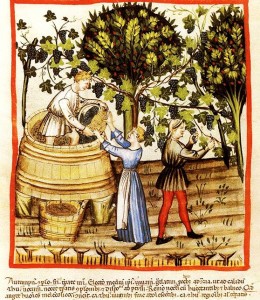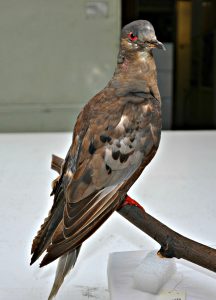In honor of Halloween and the very last day of Archives Month, we present you with this creepy cool look at an unusual printing example in our collection, one that uses the wings of real butterflies. This post was written by Daria Wingreen-Mason, Special Collections Technical Information Specialist in the Joseph F. Cullman 3rd Library of Natural History.
Category: Biodiversity Heritage Library
Julia Blase is originally from Tucson, Arizona. She moved to D.C. in 2013 as part of the Library of Congress and the Institute of Museum Library and Services’s National Digital Stewardship Residency program, where she led a digital asset management project for the National Security Archive. Prior to D.C. she lived in Denver, Colorado, where she was pursuing her master of library and information science from Denver University while managing the Denali Centennial online exhibit project at the American Alpine Club Library. She also earned a master’s degree in management from the Fuqua School of Business and a bachelor’s degree in art history from Duke University.

Now that the time of harvesting grapes for wine in the Northern Hemisphere is coming to a close, let’s raise an appreciative glass and toast John Adlum, known to a few as the “Father of American Viticulture.” The history of wine making in the United States is involved, to say the least (see Pinney’s magisterial work on the subject*) but it was Adlum who nurtured the first commercially viable vine in this country. And he did so, surprisingly but not incidentally, in the nation’s capital.
This post was written by Grace Costantino, Outreach and Communication Manager for the Biodiversity Heritage Library (BHL). It first appeared on the BHL blog here.
Deep within the rainforest canopy of the Aru Islands, just west of New Guinea, two male Greater Birds-of-Paradise dance among the branches in carefully coordinated steps, their magnificent yellow, white, and maroon plumage undulating gracefully to the rhythm of their own unique song.

This post is written by Helen James, Curator-in-Charge, Division of Birds, National Museum of Natural History. Ask Helen a question during our Twitterchat on Tuesday, September 2nd!
Martha, the last passenger pigeon, is back on public display for the first time since 1999, this time in an exhibition titled Once There Were Billions: Vanished Birds of North America that opened in the Smithsonian Libraries Exhibition Gallery of the National Museum of Natural History on June 24. Martha died on September 1, 1914, in the Cincinnati Zoo; she was immediately frozen into a 300-pound block of ice and shipped by fast train to the Smithsonian in Washington. There her body was carefully preserved as a taxidermy mount and an anatomical specimen. She had been recognized in the last years of her life as the only surviving individual of a species that was the most abundant bird in North America only decades earlier. In death, she has become one of the Smithsonian’s most treasured specimens. Martha’s story was a wake-up call for our nation regarding its unregulated harvesting of natural resources and contributed to the development of our modern conservation ethic and laws protecting wildlife.
Please join the Smithsonian Libraries, the National Museum of Natural History (NMNH) and the Biodiversity Heritage Library (BHL) for a twitterchat on September 2nd. The chat will take place between 2-3 pm (EST) and feature Helen James, Curator of Birds and our recent Once There Were Billions exhibit in NMNH, and Martin Kalfatovic, Program Director of the Biodiversity Heritage Library.

